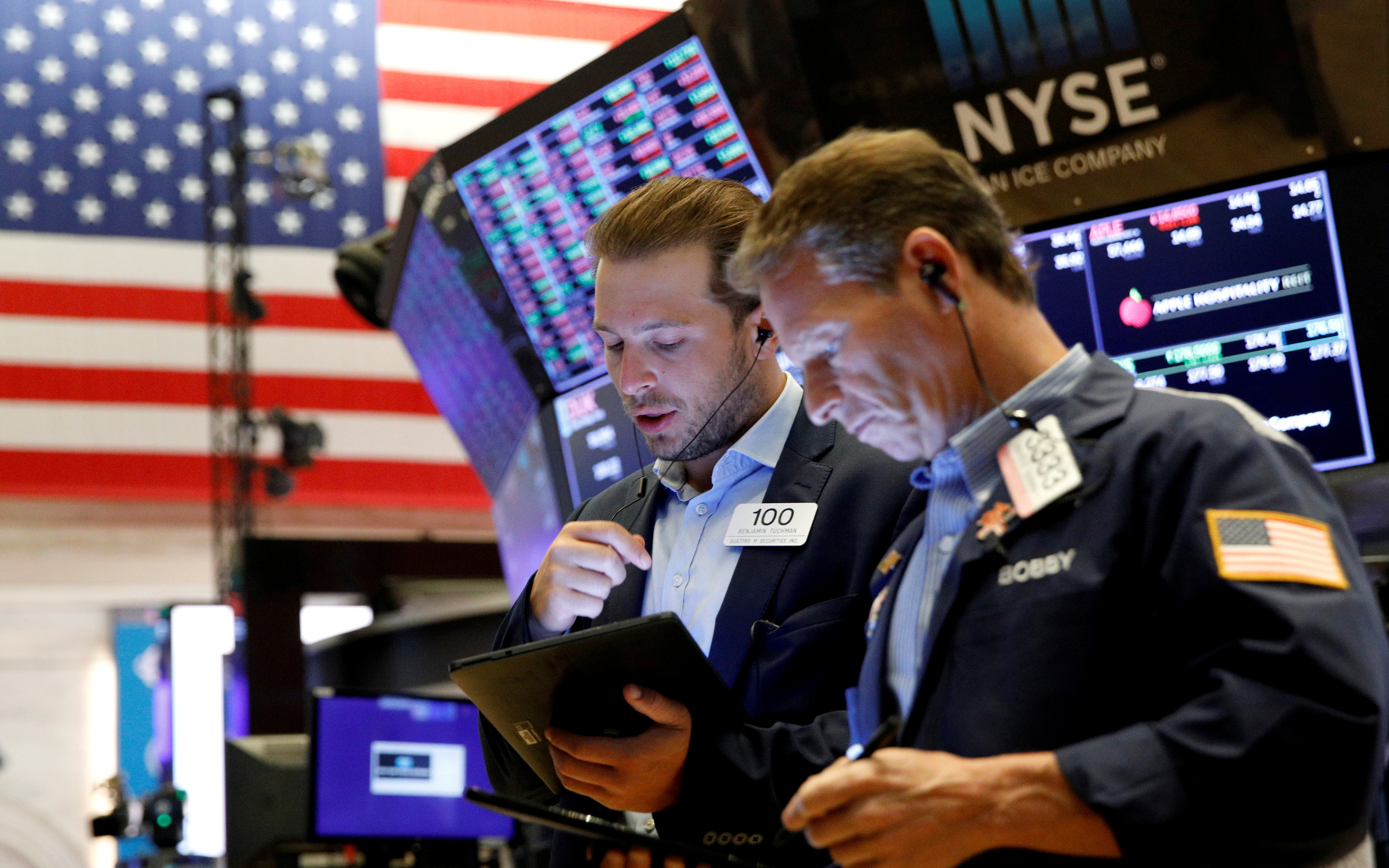Today’s News
The U.S. stock market saw a slight decline on Monday as investors took a pause following Thanksgiving, coinciding with the start of the holiday shopping season and Cyber Monday deals that attracted shoppers. All three key U.S. stock indexes closed marginally lower.
Tom Hainlin, national investment strategist at U.S. Bank Wealth Management in Minneapolis, stated, “Markets are taking a breather to digest these gains we’ve seen in November.” “We’re at the higher end of a trading range we’ve been in for some time.”

Image Source: Bloomberg
Cyber Monday’s online deals are projected to prompt shoppers to spend a record USD12 billion, signifying positive consumer health, responsible for about 70% of the U.S. GDP, as reported by Adobe Analytics. Investors are now directing their attention towards supplementary data, particularly inflation rates, consumer confidence, and spending patterns, aiming to assess the synchronization between Main Street and Wall Street. Greg Bassuk, chief executive officer at AXS Investments in New York, observed, “Coming off four weeks of very strong and positive market activity we’re seeing investors take a bit of a breather and focus on data.” He highlighted, “This week all eyes will be focused on additional inflation data as well as consumer confidence and spending to determine if Main Street has kept up with Wall Street.”

Image Source: Reuters
Analysts are contemplating the Federal Reserve’s position amidst a resilient consumer and a tightening labor market in a potentially softening economy. While the Fed has likely concluded its tightening cycle, there are expectations that it might maintain its restrictive policy rates for a longer duration than anticipated. The financial markets have priced in a 96.8% chance that the central bank will keep its Fed funds target rate unchanged at the next meeting, with the possibility of a rate cut gaining ground in mid-2024, according to CME’s FedWatch tool.
Regarding economic indicators, a notable drop in new home sales added to the subdued atmosphere. The Commerce Department is expected to release the second take on third-quarter GDP and the broad-ranging Personal Consumption Expenditures (PCE) report later this week, while market participants eagerly await comments from Federal Reserve policymakers for insights into the central bank’s policy duration.
Hainlin added, “We expect that (the Fed) will continue to be cautious about concluding that they’ve reached the end of rate hikes. We’re close to – if not at – the peak rate, so the debate is how long rates will stay there, and when or if they’ll cut rates in 2024.”
Market Indices Movement
The Dow Jones Industrial Average fell 56.68 points, or 0.16%, closing at 35,333.47, while the S&P 500 dipped by 8.91 points, or 0.20%, ending at 4,550.43. Additionally, the Nasdaq Composite saw a decrease of 9.83 points, or 0.07%, finishing at 14,241.02.
In the S&P 500, healthcare and industrials experienced the most substantial percentage declines, while real estate and consumer discretionary sectors saw the most significant gains.
Amidst Cyber Monday enthusiasm, Affirm Holdings soared by 12.0% due to high adoption of its “buy now, pay later” option, boosting online holiday sales. Online gift platforms Etsy and Shopify witnessed increases of 3.0% and 4.9%, respectively.
In other news, Crown Castle International surged 3.4% as activist investor Elliott Investment Management seeks changes in its leadership. Conversely, GE HealthCare declined by 3.5% following UBS’s downgrade of its stock to “sell” from “neutral.”
Declining issues surpassed advancing ones on the NYSE and Nasdaq, with the S&P 500 posting 38 new 52-week highs and no new lows, while the Nasdaq Composite recorded 84 new highs and 79 new lows.
Volume on U.S. exchanges stood at 9.25 billion shares, lower than the 10.42 billion average for the last 20 trading days.
Other News
ECB Mulls Speeding Up End Of Bond Purchases
ECB President Christine Lagarde hints at discussions to conclude the ECB’s bond purchases sooner than planned, suggesting a potential tightening of monetary policy beyond previous interest rate hikes, anticipating discussions within the ECB governing council.
Stocks Pause November Surge Amid Black Friday Optimism
U.S. stocks paused their November ascent with slight declines after a strong Black Friday, marked by positive retail sales and increased in-person traffic. Investors remained cautiously optimistic regarding potential Federal Reserve rate cuts in the coming year amidst mixed economic indicators.
Wall Street Braces For Possible Rate Cuts
Investors foresee a potential Federal Reserve rate cut, signaling a shift from a period of hikes amid economic growth, with recent data reflecting a growing chance of cuts next year as inflation concerns ease.



